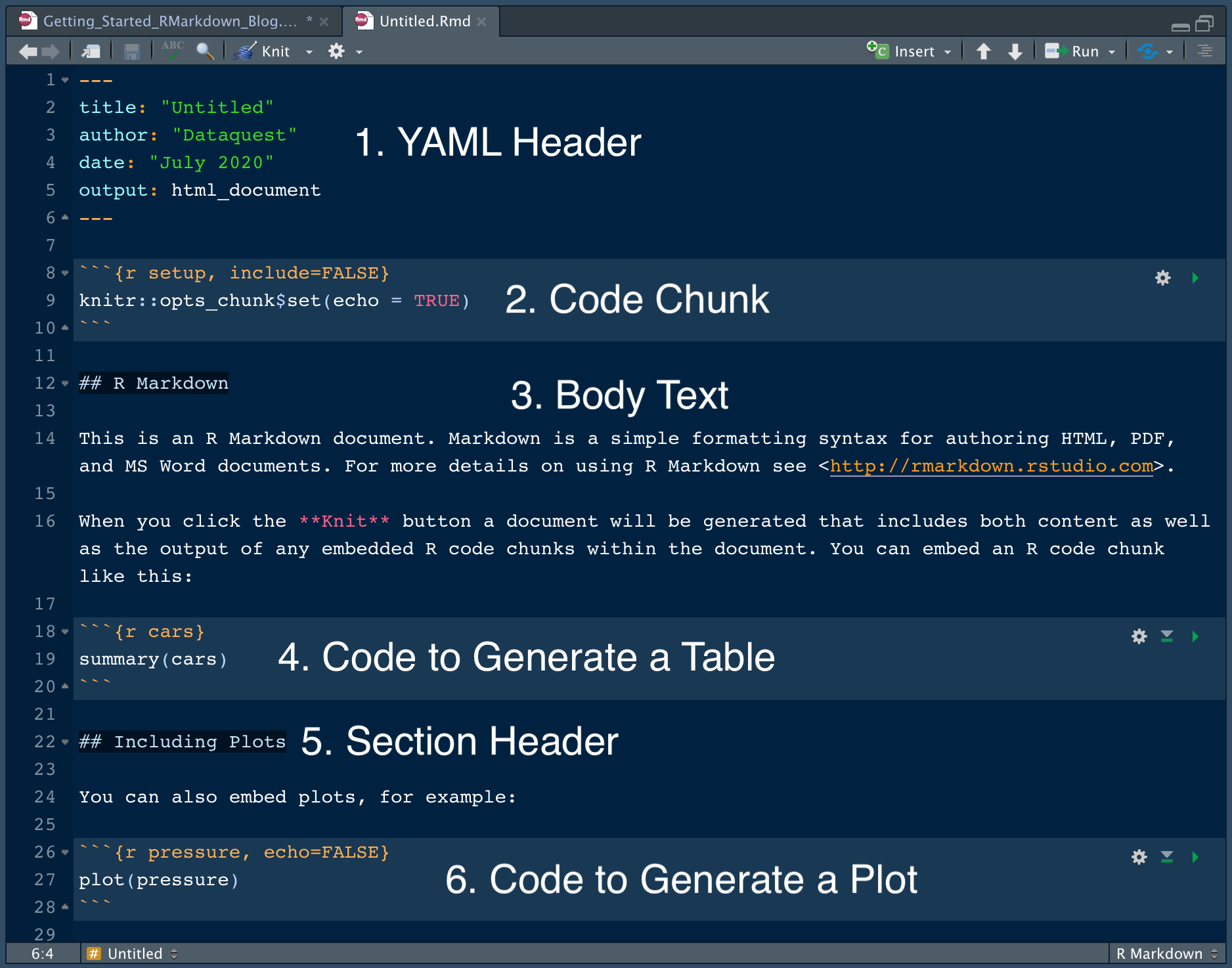
#RMARKDOWN ECHO CODE#
When you are more familiar with R, you can also starting writing R markdown documents from scratch, typing in the code as you go. While tedious, this is a great way to create R markdown documents as it ensures that the code itself is working. In this lab, we started with a working R script, then converted that R script into an R markdown document.

Remember the setup chunk right at the top of the R markdown document? If a particular code chunk does not have any options specified, it will follow whatever is in the setup chunk. (The default values are fig.width=7 and fig.height=5.) Next, notice how code chunks are represented in the. Can you see how the markdown syntax (such as the # before “R Markdown” and the asterisks surrounding “Knit”) get styled in the final document? If you open up the “.html” file in your web browser, you will see that it is the same as the preview.Ĭompare the contents of the. To expand it to a new window, click the “Show in new window” button (on the right of the broom icon).) (It’s possible that your preview shows up in the “Viewer” window in the bottom-right corner as well. A preview of our document opens in a new window:.A new file, “Airbnb-analysis.html”, is created in the same folder as the.An “R Markdown” tab appears in the bottom-left sub-window, looking something like this:.If the file has not be saved yet, it will be saved.A couple of things happen when you do this: To create the HTML document from this R Markdown file, click on the button (or use the shortcut Cmd/Ctrl + Shift + K). You can change these fields by manually editing them here. Just notice that the “title” and “author” fields were automatically populated by what we filled in in an earlier window, and that the date is the date when the document was created. We won’t talk much about this header in this class. R markdown uses it to control many details of the whole document. It is separated from the rest of the document by -s. The top section (in red) is called the YAML header (“yet another markup language”).

The filename in the window will become “Airbnb analysis.Rmd”. Notice how the filename is “Untitled1”? Save the document in our class folder with the name “Airbnb analysis”.


Upon clicking “OK”, a new sub-window appears in the top-left of our RStudio window with some default text. For “Default Output Format”, select HTML. Type in “Analysis of Airbnb Data in NYC 2019” for Title, and your name for Author. Click on the icon in the top-left corner of the window and select “R Markdown…” In the window that pops up, select “Document” in the sidebar on the left. Let’s create an R markdown file where we will write up our data analysis.


 0 kommentar(er)
0 kommentar(er)
